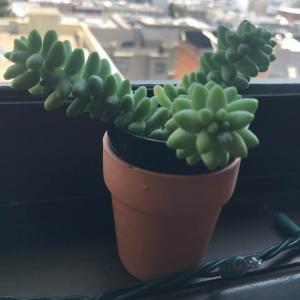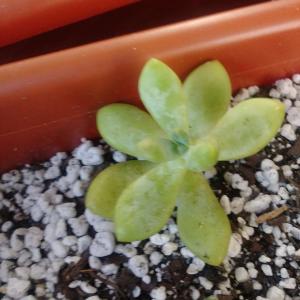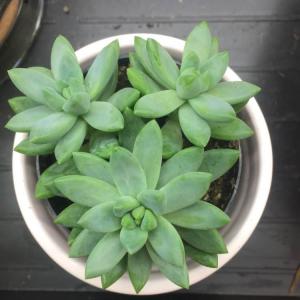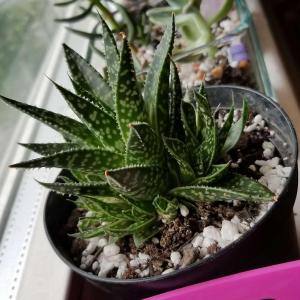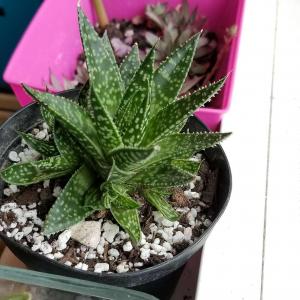文章
Dummer. ゛☀
2017年08月26日

Curcuma longa is a sterile triploid organism that has evolved through natural selection and propagation. A relative of ginger and sharing similar growing conditions, it is a hybrid of the wild turmeric found in Southern Asia, with India being the predominant producer of growing turmeric plants for trade. Turmeric can also be found in China (where it has been cultivated since the seventh century), Jamaica, Indonesia and Malaysia. Let’s learn more about this plant, its benefits and how to grow turmeric in the home or garden.
What Does the Turmeric Plant Look Like?
Turmeric plants grow to 3 feet high with large, 5-inch, deep green leaves. The blooms are green and white edged with vibrant pink and yellow.
Turmeric Benefits
Growing turmeric plants are great sources of vitamin C, magnesium and potassium, but the list of turmeric benefits doesn’t stop there. With the cultivation of turmeric dating from 300 BC by the Harappan civilization, turmeric has been long found to have a plethora of medicinal benefits. Arthritis, muscle sprains, swelling, and pain caused by injury or surgical incision has been shown to be relieved. Stomach and liver ailments, skin diseases and some heart related diseases can all be aided with the use of turmeric plants. It can be utilized as a blood purifier, anti-inflammatory and antioxidant too. Growing turmeric and using the Curcumin from the plants may aid in the battle against certain types of cancer, including leukemia. Further studies have shown that turmeric plants may also be beneficial to those afflicted with Alzheimer’s disease. In China, the plants have been used as a treatment for depression. There are additional turmeric benefits to one’s daily life, such as its use in cosmetics or sunscreen, as a home remedy for sunburn, as a dye for the body or cloth, and even as a depilatory for Indian women. It is widely reputed to aid in digestion and for this reason is a major ingredient in Indian cuisine, including curry. Turmeric is also the ingredient which lends its brilliant yellow color to mustards.
Can You Grow Turmeric?
Can you grow turmeric? Sure, although turmeric plants are really better suited to open fields with a climate that is not easily found in North America. That said, with the correct conditions, I would give it a go. A hardy ginger, growing turmeric plants require certain conditions such as humid warm weather and significant rain. When growing these plants in the home or garden, temperatures between 68-86 F. (20-30 C.) are required.
How to Grow Turmeric?
These hardy ginger relatives die back in the winter and pop back up in the spring, growing from a system of rhizomes and propagating via vegetative reproduction. This means that each piece of rhizome has the capacity to become a new plant, provided each division has a piece of the crown. You can start growing turmeric this way with a small piece of rhizome gifted to you from another gardener or purchased from a nursery. Either way, you will soon have a forest of turmeric plants as they grow and spread rapidly. When one is growing turmeric, choose a morning sun exposure with afternoon part shade and moist clay to part clay soil. Planting takes place in the spring. Plant the section 4 inches deep, unless container gardening in which case 1 to 2 inches may be sufficient. Maintain adequate moisture and dig the roots up in late fall or early winter when the plant is dormant. Remember, these plants may be injured if temperatures fall below 50 F (10 C.).

What Does the Turmeric Plant Look Like?
Turmeric plants grow to 3 feet high with large, 5-inch, deep green leaves. The blooms are green and white edged with vibrant pink and yellow.
Turmeric Benefits
Growing turmeric plants are great sources of vitamin C, magnesium and potassium, but the list of turmeric benefits doesn’t stop there. With the cultivation of turmeric dating from 300 BC by the Harappan civilization, turmeric has been long found to have a plethora of medicinal benefits. Arthritis, muscle sprains, swelling, and pain caused by injury or surgical incision has been shown to be relieved. Stomach and liver ailments, skin diseases and some heart related diseases can all be aided with the use of turmeric plants. It can be utilized as a blood purifier, anti-inflammatory and antioxidant too. Growing turmeric and using the Curcumin from the plants may aid in the battle against certain types of cancer, including leukemia. Further studies have shown that turmeric plants may also be beneficial to those afflicted with Alzheimer’s disease. In China, the plants have been used as a treatment for depression. There are additional turmeric benefits to one’s daily life, such as its use in cosmetics or sunscreen, as a home remedy for sunburn, as a dye for the body or cloth, and even as a depilatory for Indian women. It is widely reputed to aid in digestion and for this reason is a major ingredient in Indian cuisine, including curry. Turmeric is also the ingredient which lends its brilliant yellow color to mustards.

Can You Grow Turmeric?
Can you grow turmeric? Sure, although turmeric plants are really better suited to open fields with a climate that is not easily found in North America. That said, with the correct conditions, I would give it a go. A hardy ginger, growing turmeric plants require certain conditions such as humid warm weather and significant rain. When growing these plants in the home or garden, temperatures between 68-86 F. (20-30 C.) are required.

How to Grow Turmeric?
These hardy ginger relatives die back in the winter and pop back up in the spring, growing from a system of rhizomes and propagating via vegetative reproduction. This means that each piece of rhizome has the capacity to become a new plant, provided each division has a piece of the crown. You can start growing turmeric this way with a small piece of rhizome gifted to you from another gardener or purchased from a nursery. Either way, you will soon have a forest of turmeric plants as they grow and spread rapidly. When one is growing turmeric, choose a morning sun exposure with afternoon part shade and moist clay to part clay soil. Planting takes place in the spring. Plant the section 4 inches deep, unless container gardening in which case 1 to 2 inches may be sufficient. Maintain adequate moisture and dig the roots up in late fall or early winter when the plant is dormant. Remember, these plants may be injured if temperatures fall below 50 F (10 C.).
1
1
文章
Dummer. ゛☀
2017年08月24日

The scent is unmistakable but is your lavender really a lavender? You may have a hybrid of lavender called lavandin. Flower spikes, leaves and aroma can’t separate lavandin vs. lavender, but the size of the plants and the amount of camphor in the oil can give a clue as to which is which. Lavandin is most commonly referred to as French lavender and has a featured place in the perfume and cosmetics trade. We’ll go over some lavandin information so you can decide which is best, lavender or lavandin.
Lavandin Information
Lavandin is related to the common lavender, Lavandula augustifolia. What is lavandin? French lavender plants are sterile hybrid crosses between English lavender (L. augusifolia) and Portuguese lavender (L. latifolia). The result is Lavandula dentata, or lavandin.
There are many uses for lavandin, most in the cosmetics industry, due to the high amount of aromatic oils in the plant. Lavandin only produces flowers once per year, but the plant is filled with blooms and flowers which have a higher camphor content than English lavender. This makes it suited for aromatherapy treatments, cosmetics and cleaning products. Another difference with lavandin vs. lavender is the size of the bush. Lavandin tends to produce larger plants with more flowers at one time. The plants form small shrubs that may grow 16 to 18 inches in height and have spiked flowers in hues of lilac purple to violet blue. The foliage is grayish green and resinous.
Uses for Lavandin
The aromatherapy industry has made lavandin their own, with high demand for the extremely scented herb. Some of the major species for production of the oil are Grosso, Provenance, Phenomenal, and Giant Hidcote. While lavender is used for medicinal purposes as well as cosmetic, lavandin is too strong for medical applications. Therefore, it is bred strictly for its aromatic properties and was a large part of the French perfume industry. Lavandin can be used to repel insect pests and may be antiseptic, which makes it an excellent cleaner. The aroma itself is relaxing and helps relieve body aches and stress.
Lavandin Plant Care
Lavandin should be planted in a full sun location in well-draining soil. The plants are quite drought tolerant once established but best growth will be achieved by keeping lavandin evenly moist but never soggy. Prune plants when they are young to keep them from getting woody and unproductive over time. Prune stems back one third in early spring. After blooming, lightly shear the spent flower heads. With proper shearing and pruning, the plant can remain a tight mounded form with lively growth. Left alone and unpruned, many lavandin get woody and gradually stop producing flowers and even leaves. Lavandin is useful in either containers or in a bright spot in the garden. Harvest and dry the flowers to extend the scent and bring it into the home interior.

Lavandin Information
Lavandin is related to the common lavender, Lavandula augustifolia. What is lavandin? French lavender plants are sterile hybrid crosses between English lavender (L. augusifolia) and Portuguese lavender (L. latifolia). The result is Lavandula dentata, or lavandin.
There are many uses for lavandin, most in the cosmetics industry, due to the high amount of aromatic oils in the plant. Lavandin only produces flowers once per year, but the plant is filled with blooms and flowers which have a higher camphor content than English lavender. This makes it suited for aromatherapy treatments, cosmetics and cleaning products. Another difference with lavandin vs. lavender is the size of the bush. Lavandin tends to produce larger plants with more flowers at one time. The plants form small shrubs that may grow 16 to 18 inches in height and have spiked flowers in hues of lilac purple to violet blue. The foliage is grayish green and resinous.

Uses for Lavandin
The aromatherapy industry has made lavandin their own, with high demand for the extremely scented herb. Some of the major species for production of the oil are Grosso, Provenance, Phenomenal, and Giant Hidcote. While lavender is used for medicinal purposes as well as cosmetic, lavandin is too strong for medical applications. Therefore, it is bred strictly for its aromatic properties and was a large part of the French perfume industry. Lavandin can be used to repel insect pests and may be antiseptic, which makes it an excellent cleaner. The aroma itself is relaxing and helps relieve body aches and stress.

Lavandin Plant Care
Lavandin should be planted in a full sun location in well-draining soil. The plants are quite drought tolerant once established but best growth will be achieved by keeping lavandin evenly moist but never soggy. Prune plants when they are young to keep them from getting woody and unproductive over time. Prune stems back one third in early spring. After blooming, lightly shear the spent flower heads. With proper shearing and pruning, the plant can remain a tight mounded form with lively growth. Left alone and unpruned, many lavandin get woody and gradually stop producing flowers and even leaves. Lavandin is useful in either containers or in a bright spot in the garden. Harvest and dry the flowers to extend the scent and bring it into the home interior.
1
0
文章
Miss Chen
2017年08月11日

Orchids have a reputation for being difficult and laborious to care for, but do not let that discourage you from keeping the plants in your home or greenhouse. Most of the orchids on the mainstream market today are hybrid varieties, bred specifically for beauty combined with ease of care.

Location
If you do not have a greenhouse or a conservatory, place orchids on a windowsill. If you see that the leaves are reddening at the edges or have become pale and yellow, the orchid is getting too much light. Move it to a shadier spot. You will know when the level of light is good because the orchid's leaves will stay glossy and green. During the summer months, keep orchids outside in indirect sun. Remember to water them regularly, and occasionally feed them with an orchid fertilizer.
Moisture
Orchids thrive in a humid atmosphere and they must have excellent ventilation around their roots. Never re-pot your orchid in regular soil---you need a special orchid mix and special pots with air vents. If you live in a dry climate, it will help to sit your orchids on a tray of pebbles. Keep a shallow layer of water around the pebbles, but make sure the orchid's roots are never submerged. The water moistens the air around the orchid. To replicate humid conditions, spritz the orchid with water regularly.
Temperature

Orchids generally can not tolerate temperatures lower than 50 degrees. If your orchids are kept outside during warmer months, wait until nighttime temperatures have dropped into the 50s, as the colder air promotes the growth of new stems and blooms. Because orchids thrive in temperatures up to around 85 degrees, in most climates it is unlikely to become too hot for them indoors. When temperatures are high, increase the amount and frequency of watering. In hot climates, look for heat-tolerant orchids like Phalaenopsis and Dendrobium.

Location
If you do not have a greenhouse or a conservatory, place orchids on a windowsill. If you see that the leaves are reddening at the edges or have become pale and yellow, the orchid is getting too much light. Move it to a shadier spot. You will know when the level of light is good because the orchid's leaves will stay glossy and green. During the summer months, keep orchids outside in indirect sun. Remember to water them regularly, and occasionally feed them with an orchid fertilizer.
Moisture
Orchids thrive in a humid atmosphere and they must have excellent ventilation around their roots. Never re-pot your orchid in regular soil---you need a special orchid mix and special pots with air vents. If you live in a dry climate, it will help to sit your orchids on a tray of pebbles. Keep a shallow layer of water around the pebbles, but make sure the orchid's roots are never submerged. The water moistens the air around the orchid. To replicate humid conditions, spritz the orchid with water regularly.
Temperature

Orchids generally can not tolerate temperatures lower than 50 degrees. If your orchids are kept outside during warmer months, wait until nighttime temperatures have dropped into the 50s, as the colder air promotes the growth of new stems and blooms. Because orchids thrive in temperatures up to around 85 degrees, in most climates it is unlikely to become too hot for them indoors. When temperatures are high, increase the amount and frequency of watering. In hot climates, look for heat-tolerant orchids like Phalaenopsis and Dendrobium.
0
0
文章
Miss Chen
2017年08月10日


Floribunda roses present clusters of two to three blooms on each cane, growing from 2 to 4 feet tall. These lovely specimens are a hybrid created by crossing hybrid tea roses with polyanthas. Bred to be hardy and disease-resistant, they require minimal maintenance. With just a little effort, you can have glorious blooms all season long.
Floribunda Rose Care
Step 1
Prune canes once leaf buds appear in the spring to stimulate plant growth. Cut each cane back by half. Use sharp scissors or clippers.
Step 2
Fertilize floribunda roses each spring once new growth appears. Use a rose-specific fertilizer and follow label directions carefully. Rose fertilizer is available as a liquid concentrate and as pellets. Liquid concentrate is mixed with water and poured at the base of the plant. Pellet form fertilizer is shaken on the soil around the plant. Either application is effective; pellets are applied less often than the liquid concentrate.
Step 3
Work shredded leaves, compost or other organic material into the ground around the rose bush. Do not disturb the plant's roots.

Step 4
Shovel a 1- to 3-inch layer of mulch on top of the soil surrounding the floribunda rose; this helps the plant retain moisture and limits weed growth. Avoid laying mulch up against the base of plant as that could cause stem rot.
Step 5
Water plant once or twice a week, supplementing the natural rainfall. Water deeply and aim for the base of the plant. Roses require 4-5 gallons of water per week during the growing season. Shallow watering may cause the development of weak roots.
Step 6
Prune the rose bush as flowers finish blooming. This will stimulate new growth. Once a flower is done blooming, cut back that cane. Perform the cut with sharp scissors or clippers and aim for a spot directly above a leaf bud. New growth will appear just below the cut.
0
0
文章
Miss Chen
2017年08月10日

Knockout roses are a group of hybrid shrub roses bred for wide climate tolerance and significant resistance to disease and insect pests. Unlike traditional rose pruning, Knockout rose shrubs perform better when sheared down each year in the spring. They are also self-cleaning so they do not require dead heading, which adds to their low maintenance.

Annual Pruning
Pruning Knockout roses should be done once a year in the early spring or after the last hard frost has passed in your region. Even significant or harsh pruning in the early spring will not inhibit bloom in the current year. Knockout shrubs will easily rebound from their spring pruning with prolific bloom in the late spring, summer and fall until the first hard frost occurs.

Pruning Technique
Annual pruning of Knockout roses is most easily done with a clean and sharp pair of long-blade scissor shears or loppers. Unlike traditional rose pruning that requires cane by cane cuts, Knockout roses neither require nor perform well with this style of pruning. Lopping off up to one-third of the rose shrub volume and bringing the height down to between one and two feet over the crown of the plant is ideal. Make a flat-top cut with the tool blades held parallel to the shrub top. Clearing up all of the clippings and debris from the soil surface will help to keep disease and pests from establishing themselves and leave a clean surface for fertilizer and mulch applications.

Annual Pruning
Pruning Knockout roses should be done once a year in the early spring or after the last hard frost has passed in your region. Even significant or harsh pruning in the early spring will not inhibit bloom in the current year. Knockout shrubs will easily rebound from their spring pruning with prolific bloom in the late spring, summer and fall until the first hard frost occurs.

Pruning Technique
Annual pruning of Knockout roses is most easily done with a clean and sharp pair of long-blade scissor shears or loppers. Unlike traditional rose pruning that requires cane by cane cuts, Knockout roses neither require nor perform well with this style of pruning. Lopping off up to one-third of the rose shrub volume and bringing the height down to between one and two feet over the crown of the plant is ideal. Make a flat-top cut with the tool blades held parallel to the shrub top. Clearing up all of the clippings and debris from the soil surface will help to keep disease and pests from establishing themselves and leave a clean surface for fertilizer and mulch applications.
0
0
文章
Miss Chen
2017年08月10日

Growing roses from cuttings is relatively simple. However, not all roses are appropriate for dividing. Some of the newer hybrid roses must be grafted by a professional. Antique or "old roses" are especially easy to propagate. Late summer and early fall are the ideal times to make cuttings, but almost any time of the year will work.

Step 1
Choose a strong cane that has four to five leaves. The cane should be disease-free and insect-free. The cutting needs to be 6 to 8 inches. Trim the top of the cutting at a 45-degree angle and at the bottom of the cutting trim another 45-degree angle just below a side branch, leaving a "heel" at the base. Place in water.
Step 2
Mix one part perlite or vermiculite and one part potting soil, and fill a peat pot or 6-inch plastic container.
Step 3
Remove the lower leaves and keep at least two at the top. With a gloved hand, press against each thorn and pop it off, careful not to damage the buds. Make a narrow, 1-inch wound on each side of the base of the cutting.

Step 4
Punch a hole in the center of the prepared pot. Dip the cutting in the rooting hormone, and insert it into the pot. Firm the soil and water with a fine spray. Label the cutting with the name of the rose and date.
Step 5
Cut two lengths of wire long enough to make an arch over the pot and form a frame for your "greenhouse." Insert the pot into the plastic bag and secure it with a tie.
Step 6
Place the pot in a warm, bright location, but avoid direct sunlight. Keep the soil moist. When new leaves appear, you will know that the cutting has grown roots. This process usually takes five to eight weeks.
Step 7
Transfer the rooted cutting to an 8-inch or larger pot filled with organic potting soil. Make sure all the roots are covered. Add a slow-release fertilizer to the soil. Keep the plant in cool shade for one to two weeks, then gradually expose it to direct sunlight for several hours a day. Make several slits in the plastic bag and expose the plant for a few days, allowing it to become slightly dryer before transplanting. Transplant to your garden in about six months.

Step 1
Choose a strong cane that has four to five leaves. The cane should be disease-free and insect-free. The cutting needs to be 6 to 8 inches. Trim the top of the cutting at a 45-degree angle and at the bottom of the cutting trim another 45-degree angle just below a side branch, leaving a "heel" at the base. Place in water.
Step 2
Mix one part perlite or vermiculite and one part potting soil, and fill a peat pot or 6-inch plastic container.
Step 3
Remove the lower leaves and keep at least two at the top. With a gloved hand, press against each thorn and pop it off, careful not to damage the buds. Make a narrow, 1-inch wound on each side of the base of the cutting.

Step 4
Punch a hole in the center of the prepared pot. Dip the cutting in the rooting hormone, and insert it into the pot. Firm the soil and water with a fine spray. Label the cutting with the name of the rose and date.
Step 5
Cut two lengths of wire long enough to make an arch over the pot and form a frame for your "greenhouse." Insert the pot into the plastic bag and secure it with a tie.
Step 6
Place the pot in a warm, bright location, but avoid direct sunlight. Keep the soil moist. When new leaves appear, you will know that the cutting has grown roots. This process usually takes five to eight weeks.
Step 7
Transfer the rooted cutting to an 8-inch or larger pot filled with organic potting soil. Make sure all the roots are covered. Add a slow-release fertilizer to the soil. Keep the plant in cool shade for one to two weeks, then gradually expose it to direct sunlight for several hours a day. Make several slits in the plastic bag and expose the plant for a few days, allowing it to become slightly dryer before transplanting. Transplant to your garden in about six months.
0
1
文章
Miss Chen
2017年08月10日

Roses are the classic flowers of romance and elegance, and purple roses can make a remarkable statement in a bouquet or garden. This color is available in all types of rose plant cultivars (cultivated varieties), including hybrid tea, floribunda and climbing. Fragrance, shape and purple shade all vary among types, and sometimes even depending on the nutrients available to the rose from the soil and fertilizer. Purple roses may also be grandiflora, miniature or hedge roses.

Shades of Purple
Purple roses, regardless of type, divide into three main categories by shade: lavender, mauve and purple. Lavender roses are the palest shade, with more blue than red defining the purple color, although they can sometimes appear pinkish in photos. Mauve has more red than blue in the purple, sometimes resembling a burgundy color, but still truly purple. Finally, true purple roses are a perfect combination of red and blue, creating an eye-catching, deep purple color.
Purple Hybrid Tea Roses
Rose enthusiasts developed hybrid tea varieties by cross-breeding two kinds of roses. These roses grow tall on straight stems, usually with a single blossom per stem. They are ideal as cut flowers or specimen plants. Varieties of purple tea roses include Silver Star, Blue Moon, Blue Nile, Blue River, Stainless Steel and Neptune.
Purple Floribunda and Grandiflora Roses
Floribunda roses tend to be shrubby, with a profusion of blossoms on every stem, sometimes tending to grow in clusters. They are a modern rose developed by cross-breeding two other rose types. Purple floribunda varieties include Cotillion, Burgundy Iceberg and Enchanted Evening.
Grandifloras are rose bushes similar in form to floribundas, but tend to be larger, with their flowers taking more of a hybrid-tea-rose shape. Melody Parfumee and Sweetness are both grandiflora cultivars.
Purple Climbing Roses
Any variety of rose, including floribunda and hybrid tea, can develop a climbing form. The canes of climbing roses are longer and more flexible than those of bush forms and can reach heights of 8 feet or more, although shorter ones are also available. Night Owl is a purple climbing rose.

Purple Miniature Roses
Measuring 6 to 36 inches in height, miniature roses are often sold as houseplants, although they descend from outdoor shrubs. Most modern miniature roses are repeat bloomers, rather than the single bloomers they once were. Demitasse, Sweet Chariot and Blue Peter are three varieties of modern miniature roses.
Shrub and Purple Hedge Roses
A shrub rose is simply a type of rose that takes on a shrub form, while hedge roses are roses--usually a shrub rose type--used to form a hedge or border. Lavender Dream, Lavender Lassie, Blue Boy and Outta the Blue are purple shrub roses, and Fragrant Lavender Simplicity® is a purple hedge rose.

Shades of Purple
Purple roses, regardless of type, divide into three main categories by shade: lavender, mauve and purple. Lavender roses are the palest shade, with more blue than red defining the purple color, although they can sometimes appear pinkish in photos. Mauve has more red than blue in the purple, sometimes resembling a burgundy color, but still truly purple. Finally, true purple roses are a perfect combination of red and blue, creating an eye-catching, deep purple color.
Purple Hybrid Tea Roses
Rose enthusiasts developed hybrid tea varieties by cross-breeding two kinds of roses. These roses grow tall on straight stems, usually with a single blossom per stem. They are ideal as cut flowers or specimen plants. Varieties of purple tea roses include Silver Star, Blue Moon, Blue Nile, Blue River, Stainless Steel and Neptune.
Purple Floribunda and Grandiflora Roses
Floribunda roses tend to be shrubby, with a profusion of blossoms on every stem, sometimes tending to grow in clusters. They are a modern rose developed by cross-breeding two other rose types. Purple floribunda varieties include Cotillion, Burgundy Iceberg and Enchanted Evening.
Grandifloras are rose bushes similar in form to floribundas, but tend to be larger, with their flowers taking more of a hybrid-tea-rose shape. Melody Parfumee and Sweetness are both grandiflora cultivars.
Purple Climbing Roses
Any variety of rose, including floribunda and hybrid tea, can develop a climbing form. The canes of climbing roses are longer and more flexible than those of bush forms and can reach heights of 8 feet or more, although shorter ones are also available. Night Owl is a purple climbing rose.

Purple Miniature Roses
Measuring 6 to 36 inches in height, miniature roses are often sold as houseplants, although they descend from outdoor shrubs. Most modern miniature roses are repeat bloomers, rather than the single bloomers they once were. Demitasse, Sweet Chariot and Blue Peter are three varieties of modern miniature roses.
Shrub and Purple Hedge Roses
A shrub rose is simply a type of rose that takes on a shrub form, while hedge roses are roses--usually a shrub rose type--used to form a hedge or border. Lavender Dream, Lavender Lassie, Blue Boy and Outta the Blue are purple shrub roses, and Fragrant Lavender Simplicity® is a purple hedge rose.
0
0
文章
Miss Chen
2017年08月10日

The time to plant, and which variety of rose will succeed in your Ohio rose garden, depends on whether you live in north or south Ohio. Hybrid tea roses, for instance, require winter protection in northern Ohio, but not in the south. The time to prune a rose bush is the same, though, for all Ohio gardeners.

Significance
Rose bushes require pruning for a number of reasons, chief among them is to clear out overgrowth to allow for better air circulation within the plant. Roses are susceptible to fungal diseases that thrive when air circulation within the plant is impeded.
The Facts
Ask any number of rosarians how to prune a rose bush and you will get that many different answers. There is no one "right" way to prune. At the least, prune to thin the growth in the middle of the plant. Cut branches that cross over one another and prune to keep the plant to the size you desire.

Timing
Prime rose pruning times in Ohio gardens are during March and into early April. Heirloom roses, also known as old garden roses, should be pruned immediately after they finish blooming.

Significance
Rose bushes require pruning for a number of reasons, chief among them is to clear out overgrowth to allow for better air circulation within the plant. Roses are susceptible to fungal diseases that thrive when air circulation within the plant is impeded.
The Facts
Ask any number of rosarians how to prune a rose bush and you will get that many different answers. There is no one "right" way to prune. At the least, prune to thin the growth in the middle of the plant. Cut branches that cross over one another and prune to keep the plant to the size you desire.

Timing
Prime rose pruning times in Ohio gardens are during March and into early April. Heirloom roses, also known as old garden roses, should be pruned immediately after they finish blooming.
0
0
文章
Miss Chen
2017年08月10日

Tree roses, also called standard roses, are bush roses that have been budded onto a tall stem or trunk. Tree roses grow up to 4 feet tall.

Types
Tree roses can be grafted from almost any rose variety. The most common types are hybrid tea, grandiflora and floribunda. Hybrid tea roses bloom on single stems and come in a vast array of colors. Floribunda roses are short, hardy bush roses that bloom in clusters. Grandiflora roses are like hybrid tea roses in their plant height and popularity as cut flowers, but have several blooms per stem and bloom more frequently than hybrid tea varieties.
Features
Prune tree roses according to the type of rose that is grafted onto the stem. Varieties that bloom only once per season should be pruned after flowering. Varieties that bloom repeatedly should be pruned during their dormant season.

Geography
Roses grow best in full sun and well-drained acidic soil with a pH between 5.5 and 7.0. Amend soil with organic matter prior to planting to encourage drainage and help prevent iron deficiency. Mulch after planting to a depth of 2 to 4 inches.

Types
Tree roses can be grafted from almost any rose variety. The most common types are hybrid tea, grandiflora and floribunda. Hybrid tea roses bloom on single stems and come in a vast array of colors. Floribunda roses are short, hardy bush roses that bloom in clusters. Grandiflora roses are like hybrid tea roses in their plant height and popularity as cut flowers, but have several blooms per stem and bloom more frequently than hybrid tea varieties.
Features
Prune tree roses according to the type of rose that is grafted onto the stem. Varieties that bloom only once per season should be pruned after flowering. Varieties that bloom repeatedly should be pruned during their dormant season.

Geography
Roses grow best in full sun and well-drained acidic soil with a pH between 5.5 and 7.0. Amend soil with organic matter prior to planting to encourage drainage and help prevent iron deficiency. Mulch after planting to a depth of 2 to 4 inches.
0
0



